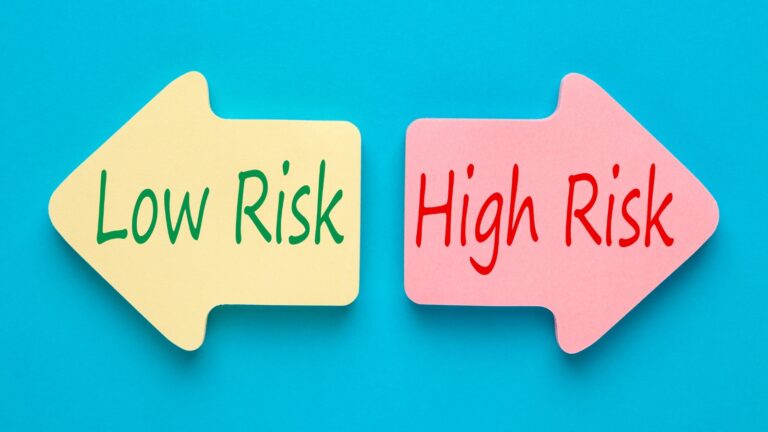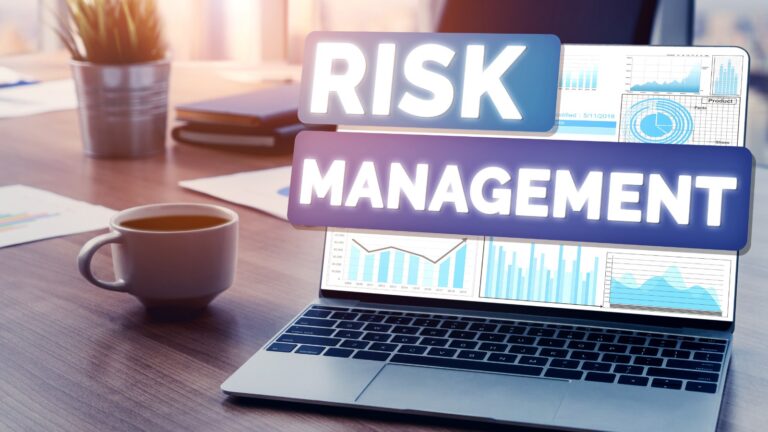It is obvious that you need to invest in various sources that you have found beneficial.
However, have you ever considered the dark side of it?
Investments are like a coin that has two sides: the benefits and the risks.
This is why the concept of ‘risk aversion’ has gained so much popularity in today’s corporate world.
What is ‘risk aversion’ as a concept when it comes to investments? What are the types of them, and how can you evaluate their pros and cons?
Let us explain everything in our blog article.
We will look into
- Corporate Bonds
- Certificate of Deposits
- Treasury Securities
- Life Insurance
- Saving Accounts
- ETFs
- Commodities
- Mutual Funds
- Penny Stocks
- Stocks
3. Pros and Cons of Being Risk Averse
3.1 Pros
- Capacity to Minimise Risk of Losses
- Being Able to Generate a Steady Income
- You are Safe with Cash Flows
3.2 Cons
- Lower Levels of Expected Returns
- Possibility of Miss Great Opportunities
- Limited Long-Term Growth.
The Definition of Risk Aversion

- If we look deeper, we see that risk aversion is a term that refers to the tendency to avoid risk.
- In this case, it is always an investor who prioritises capital preservation over the possibility of earning a higher-than-average return, and he is known as risk-averse.
- Risk in investing relates to price volatility, and a risky investment has the power to either increase the amount you invested or burn it all.
- The best thing about this is that, over time, a careful investment will increase gradually and steadily, giving you more opportunities to grow.
- Low risk in the investment world indicates more stability as when investing at minimal risk, there is almost no possibility that any of the initial investment will be lost, and a good yet unspectacular return can be expected.
Types of Risk Aversion

There are two main types of risk aversion, and in the section below, we will explore them more deeply.
Low-Risk Investments
Corporate Bonds
When it comes to corporate bonds, they offer low-risk investment options for risk-averse enthusiasts.
Corporations offer these fixed-income investments, which ensure principal repayment upon maturity along with monthly interest payments.
They generally provide greater yields than government bonds and the strong credit histories of established corporations make them less risky than government bonds.
This is the main reason why those who want trustworthy income with minimal risk exposure find them appealing.
Certificate of Deposits
As one of the best and most trusted investment types, these time-deposit accounts offer fixed interest rates for specific periods, and they ensure principal return upon maturity.
These are highly insured by trusted, responsible authorities which always provide stability and security, making them attractive options for investors who are seeking steady returns without market volatility concerns.
Treasury Securities
If you put more priority on the risk factor, then you should opt for investments in Treasury securities, such as bonds, notes, and bills, as they are well known for being low-risky.
As these are usually issued by the governments, they promise fixed interest payments and return of principal, backed by the government’s credit.
These securities provide stability and a low likelihood of default, which makes them popular options for risk-averse investors who are looking for safe-side investments, particularly in rough economic times or market downturns.
Life Insurance
Despite being so popular lately, they provide cash value accumulation, tax-free growth, and fixed death benefits for those who rely on them.
While the insurance companies ensure principal protection, they also offer a stable investment grandstand.
This is what makes life insurance a desirable option for risk-averse people who are looking for long-term stability and safety because these plans also include a death benefit, protecting the financial future of the beneficiaries they name.
Saving Accounts
The reason why these savings accounts are considered low-risk investments is because of the stability and security they offer in the first place.
Insured by the authorities, they offer impressive levels of protection up to certain limits, and also, with predictable interest rates, these accounts assure steady returns in the future.
Its high liquidity feature makes it simple to access funds, and these savings accounts are highly advised for risk-conscious people who seek security, accessibility, and assured capital preservation through their investments.
Even though returns can be lower than those of alternative assets regarding emergency cash or short-term goals.
ETFs
Since exchange-traded funds or ETFs distribute risk by pooling assets across a variety of investments such as stocks, bonds, and commodities, they can be a less risky investment option for those who are risk averse.
ETFs minimise the unpredictability of individual stocks by tracking particular benchmarks, offering a sense of stability.
They provide a balanced approach between risk and return, with lower fee ratios than mutual funds and trading flexibility, which makes them attractive to conservative investors looking for diverse financial exposure yet with lower risk.
Higher-Risk Investments
Commodities
Since commodities are naturally unpredictable and prone to market swings, they are considered high-risk investments for risk-averse people.
If we look into why it is this risky, as you can see, commodity prices are strongly impacted by factors such as supply and demand dynamics, political situations, and worldwide economic circumstances, which can result in unstable and unplanned returns.
As the risk is further increased by storage expenses, restricted remuneration, and a lack of value-chain development these commodities are not the right investment for those risk-averse investors.
Mutual Funds
They are obviously broad, but how well they perform depends on changes in the market, the choices made by fund management, and higher fees for actively managed funds, which might affect the outcomes.
On the other hand, there are stock market fluctuations that affect equity funds, while interest rate fluctuations affect bond funds.
When it comes to conservative investors looking for more steady and predictable investments, they are truly risky due to the lack of control over assets and the possibility of losses.
Penny Stocks
These stocks are frequently inexpensive, have no regulatory supervision or liquidity, and are more vulnerable to manipulation and rapid price swings due to their low market size and limited information about the company.
This is why experts state that penny stocks are not appropriate for risk-averse investors seeking stability and security since they are also vulnerable to swings in market sentiment and company-related risks, which create significant investment risk and the possibility of major losses.
Stocks
The value of the stocks depends on multiple factors like economic conditions, company performance, and market sentiment, which leads to many price fluctuations.
If we look more deeply, we can see that the risks include the potential for major losses, vulnerability to downturns, and lack of control over external market factors.
Although stocks have the potential to grow, they can also be unstable and irregular therefore, they do not provide a stable platform for the cautious investors who are trying to be on the safe side.
Pros and Cons of Being Risk Averse

Pros
Capacity to Minimise Risk of Losses
As it is evident, risk-averse people place a higher priority on capital preservation by choosing safer investments with fewer risks and steadier returns.
This strategy stays away from high-risk businesses that have the ability to be affected by severe market movements or downturns.
When they invest in assets such as bonds, savings accounts, or a diverse range of investment portfolios, they expand their capacity to lessen the risk of major financial losses due to changes in the market.
Being Able to Generate a Steady Income
Being risk averse makes it possible to create a steady stream of income as these individuals value reliable returns above high-risk, high-reward efforts and choose low-risk investments like bonds, dividend-paying equities, or fixed-income assets.
The beauty of these investments lies in their ability to offer predictable and regular income through interest payments, dividends, or coupon payments.
This approach guarantees a consistent flow of cash, offering financial security and satisfying continuous demands without depending on unstable markets.
You are Safe with Cash Flows
One advantage of having a risk-averse mentality is that it provides assured cash flows as they choose low-risk investments because they can expect set and predictable returns.
These assets usually have legal agreements attached to them, which provide consistent and predictable profit flows in the form of benefits.
Cons
Lower Levels of Expected Returns
Being risk-averse is good, yet the possibility of reduced expected profits is one disadvantage of excessive risk aversion for sure.
It is true that conservative investments offer stability, but they often yield lower returns compared to riskier, higher-yield assets.
Risk-averse people could lose out on possibly large rewards by staying away from high-growth or unpredictable markets.
As too much is not too good, putting too much emphasis on low-risk investments reduces the likelihood of projects that target growth, which affects the building of wealth over the long run.
Possibility of Miss Great Opportunities
Another drawback of excessive risk aversion is the possibility of missing out on excellent investment opportunities you rarely receive.
When risk-averse people select to be on the safe side, they might reject high-growth opportunities or creative initiatives that ultimately provide significant rewards.
As it is visible, being too conservative might lead to limited exposure to potentially profitable ventures and limit participation in growing markets or innovative businesses.
Limited Long-Term Growth
People who prefer to stay financially safe might miss out on higher-profitable possibilities that contribute to long-term wealth generation.
Although these high-risk investments have the likelihood of failing in the short term, they also have a high possibility of being successful in the long run.
It is true stability should always come first, however, taking on too much risk might make it difficult to reach retirement or long-term financial objectives.
Walking on to Low-Risk Profitability with Technology

There are always two sides when you invest your money in something.
That is why you need to have the sense to understand its risks and advantages in advance.
Technology makes it more convenient now as it can foresee many years from the present with the integrated software.
If you want to stay away from unwanted risks, why don’t you try new-age tools now?






